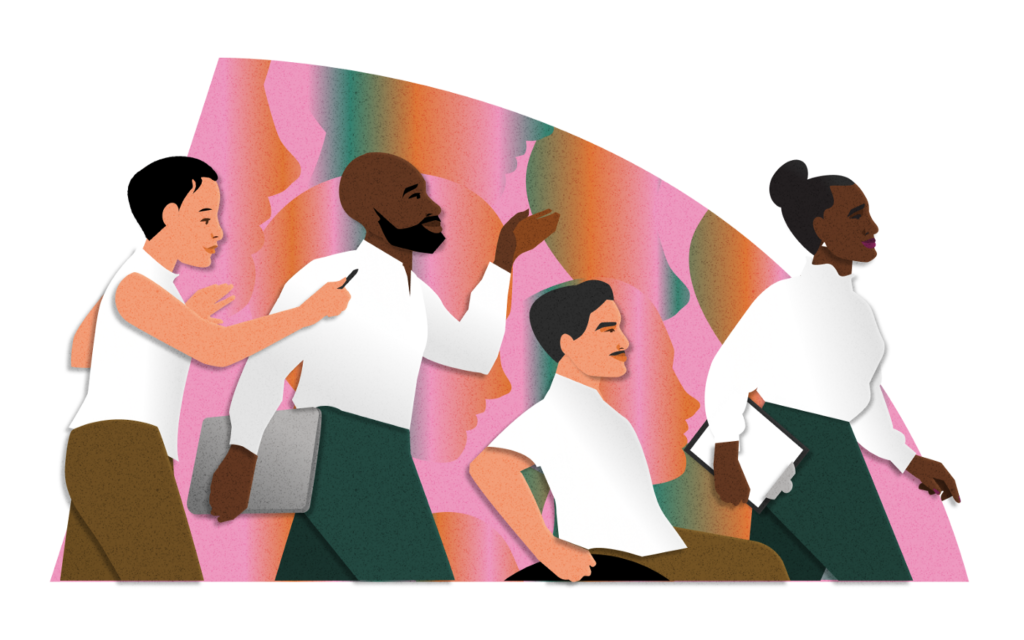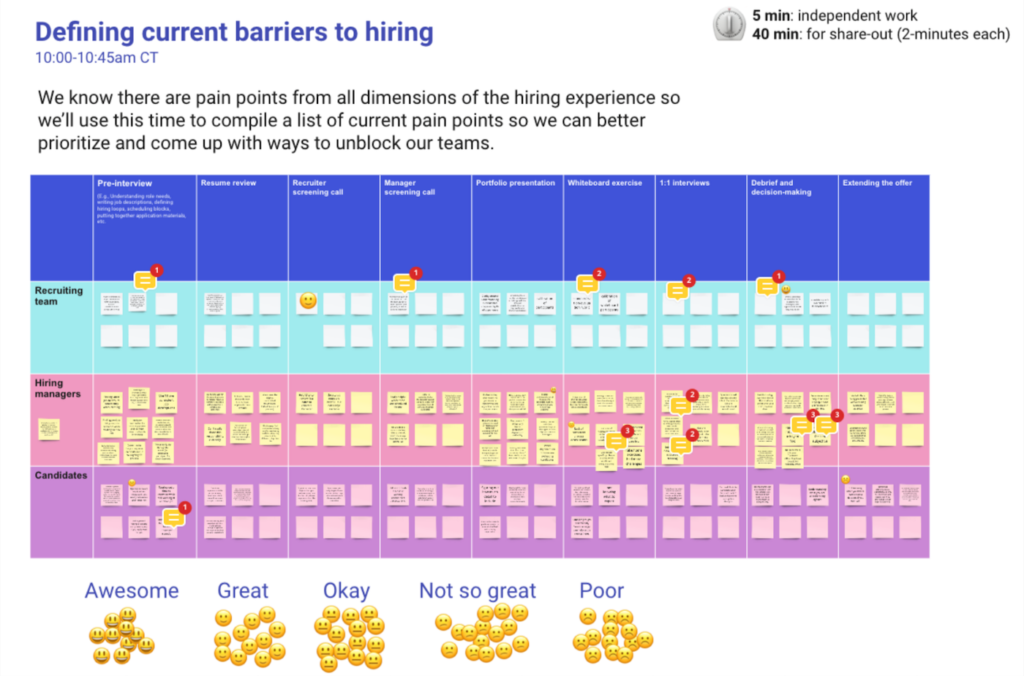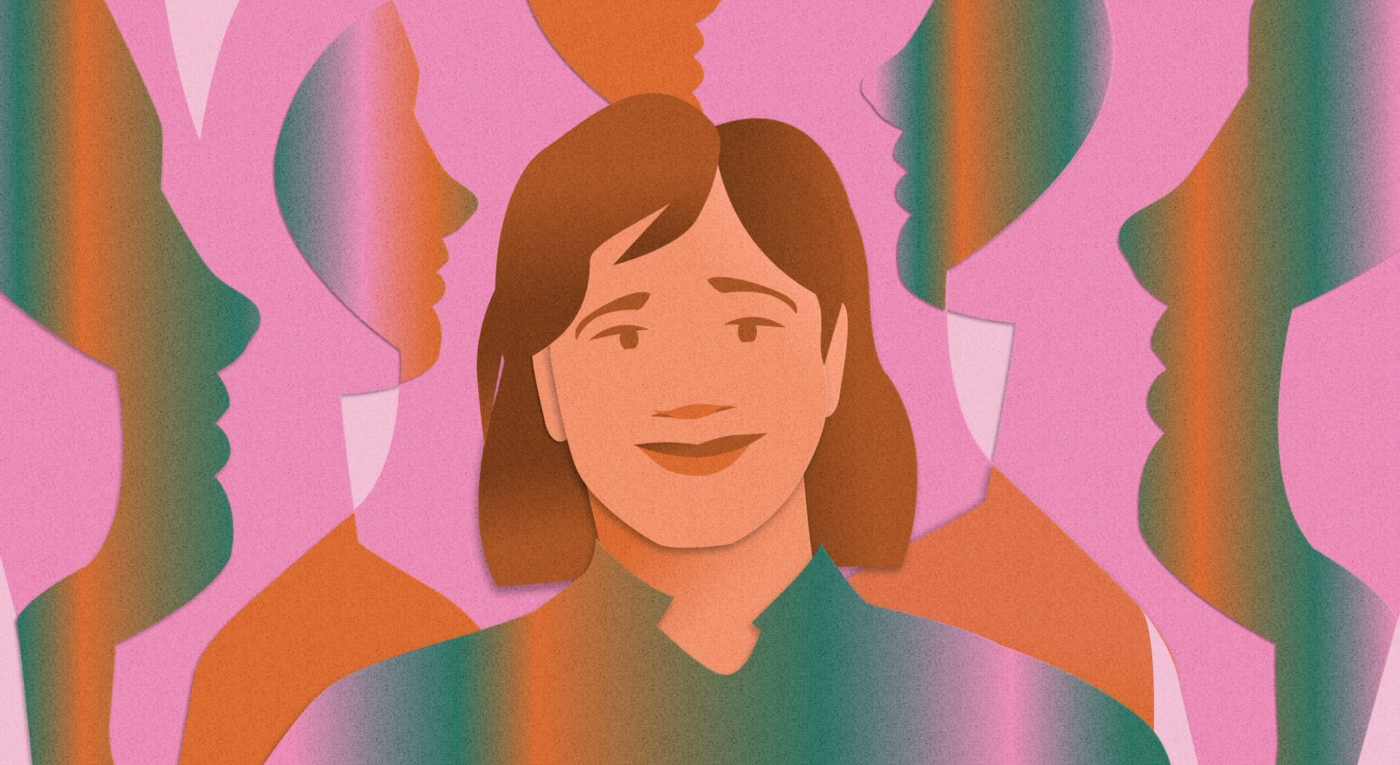As a UX designer, I’ve always leaned on empathy and user research to design meaningful and relevant product experiences. Both help me understand the needs of users and businesses and find common ground where everyone wins.
But over the last few years, I’ve discovered that empathy is much more than just a product tool for me. I’m wired to be an empath. When I began owning this part of my identity — instead of fighting against it — I evolved into a stronger, more relatable manager and leader.
Naming my sensitivity
I’ve always felt consumed by emotions, both my own and those around me. At the age of 7, I grieved about my parents’ divorce in complex ways, and I felt heartbroken and hopeless when kids picked on me because I was small. Experiences of all kinds weighed on me. Even when I enjoyed the ritual of watching movies with my family every weekend, the plot lines and imagery often left me feeling unsettled. I realized later in life that I tend to experience sad, violent, or painful things as if they were happening to me.
When I became a teenager and started my first romantic relationship, I struggled heavily with the ups and down. No matter how many other good things happened in my life, I couldn’t shake my emotions when I was hurt. I kept looking at the people around me for what was normal, and it felt like I was the only person in the world experiencing emotion this way. I longed to be as carefree as they seemed.
Over the years, I convinced myself that trying a bunch of tools for managing my emotions would make life easier. I turned to therapy, suppressing my feelings, meditation and yoga, running, getting outside, protecting my heart. I hated that none of it helped me control how my brain reacted to the world. In response to my frustration, a therapist told me, “Your emotions are completely natural. This is what it means to be human.”
I wanted to believe her, but I believed more that I was somehow broken. Still, I knew there had to be a happier way to live.
When normal doesn’t work
When the pandemic began, my life was turned upside down like everyone else’s. I was leading a content design and research team at a different company, acting as a senior leader in the UX organization, and supporting company-wide communications. I felt driven to create some stability for others in all the chaos, but I was experiencing so many emotions myself. It wasn’t sustainable to hide my emotions just because I didn’t want to look weak. My colleagues felt understandably low like me, and trying to act normal seemed almost inappropriate.
There wasn’t a script for leading through a global pandemic, so I started small experiments to shift how I led group and one-on-one meetings. I openly shared my feelings with all my colleagues and intentionally made time to check in with each of them. In my writing, I intentionally acknowledged the heaviness in the air, the struggles our community and their families were facing, and the fairly horrific state of the world. I told people I wasn’t OK.
As I leaned into my newfound empathic approach, my leadership style came more naturally. I began to notice common patterns in my daily work. If a group I worked with felt stuck, for example, it was usually because they lacked a shared understanding of the problem and had limited empathy for each stakeholder’s position.
I kept creating space for myself and others to process, and something amazing happened: my vulnerability fostered stronger community and a safer environment at work. More people felt empowered to communicate how they were doing and what they needed. I leaned on my strengths in active listening, mediation, and facilitation. Using my own skills in empathy was a way to bring people together, generate a shared understanding, and co-create a path forward.
Embracing empathy
Soon after, I put my new approach to the test when a surprise reorganization sent our UX team reeling. Instead of expressing frustration, I assumed our leaders had everyone’s best interest in mind, used my knowledge about the business to put myself in their shoes, and gained a better sense of the situation.
Where I found gaps in my knowledge, I asked questions. When I met with frustrated team members and peers, I invited them to build empathy for our leaders. Our dialogue went from venting to productive problem-solving because we stepped back and saw leaders as regular people, too. To be clear, we didn’t choose sides. We created space for everyone to process the news with each other, re-evaluate our goals, and find opportunities to move forward in the chaos.
This work didn’t stop with my immediate peers. I applied more empathy in the ways I coached my team members and mentored UX designers outside of my day job. To clear a path for others, I kept honing this new strength that helped me better understand human behavior, translate competing perspectives, and facilitate greater connection and collaboration.
Before the pandemic, I frequently questioned myself. I looked to others for definitions of how a leader was supposed to act, and I wanted reassurance that I was doing it right. Two years later, I’m more confident in my own skin and largely show up in a way that’s true to myself. This shift has led to more positive feedback about my leadership style and created space for others to share their own emotional journeys with me.
Turns out, being an empath is normal. And it’s helped me redefine what it means to be a leader, too. I’ve noticed that humanizing leadership in this way has made it feel more relatable and attainable to those I work with, which helps team members feel empowered to lead and trust colleagues to support their professional reach.

Empathy is shaping Indeed’s UX operations strategy
When I began building UX operations teams, centering empathy in my work helped shape my vision and strategy, build partnerships across a wide array of stakeholders, and pave the way for impact. When you support a variety of stakeholders and businesses, you can’t rely on your title to drive things forward. Influence through trust and alignment matter more than anything, and that’s earned by humanizing yourself and the people around you.
Understanding where we’re at
As I began building Indeed’s UX Operations team 7 months ago, I’ve interviewed nearly 100 UX and cross-functional partners across business areas, job functions, and locations to better understand where we’re at and what changes will push us to run faster. These conversations allowed me to listen and learn, which helped build trust. They also informed the roadmap for my team’s work, ensuring we prioritize the greatest opportunities for impact. As we begin delivering on that roadmap, those relationships will be key to our success. And because our stakeholders contributed to our vision, they’ll likely stay invested in our success.
Interview prompts and questions like these encourage listening, constructive feedback, and goal-setting:
- Tell me about your role at the company.
- Describe the UX team in one sentence.
- When you think about the things that would help you and your team (or teams) run faster and farther, what comes to mind?
- What is your biggest priority this year and the biggest challenge to getting there?
- What does success look like in 2022? What do you hope to be celebrating at the end of the year?
Knowing where we’re going
Indeed UX is growing rapidly this year, so one of our biggest priorities is to hire more efficiently and create a great experience for everyone involved. During my initial conversations with managers, recruiters, and recent hires on how to grow the org, lots of different opinions surfaced. But in some cases, a solution for one team would create challenges for another.
To reach a shared set of priorities, I knew it would be important for each team to share their perspective so the collective could better empathize with and understand everyone they were working with. I used a journey map workshop to create space for that and get us all on the same page. It was fun to see attendees start absorbing what I already knew and shift their perspectives so we could better collaborate. Building this shared vision together helped us move forward quickly because it let us identify where we could streamline our hiring process while also aligning on the best path.

How we’ll get there
I’ll continue leaning on empathy as I build Indeed’s UX Operations team and deliver programs to help Indeedians do their best work. Part of that is setting up regular syncs with people across the organization to stay on top of the context that shapes our community. Another important piece is designing a system of metrics to evaluate our progress on our original benchmark. I also find that periodically observing different team meetings, getting involved in events, and keeping up with Slack activity helps me tune into what’s on everyone’s minds.
Beyond staying close with our people, my team has also built empathy into our development and launch process. We release very early MVPs of resources like our onboarding deck and interview guide templates, and we invite stakeholders to user-test those and share feedback along the way. We also regularly bring together a voluntary culture group. Through it, a purposeful model of co-creation empowers anyone in the group to design UX-wide activities and events. These are just a few strategies we use to keep looking forward with everyone in mind.
Inviting more empathy into your own work
All of us can expand how we move through the world, build connections, and manage relationships. Without empathy, you might easily feel stuck or like no one understands the challenges of your day-to-day. But being vulnerable about your own life and gaining some perspective on others’ can help you relate more to those you’re working with. That perspective will improve your own work and demonstrate the strength of empathetic work practices. In this way, you can spread this approach.
Want to try becoming a more empathetic leader? Here’s what worked for me:
Put yourselves in the other person’s shoes when you notice you’re frustrated. I do this multiple times a week when I catch myself getting wrapped up in my own agenda or feeling confused because someone is behaving a certain way. Visualizing each potential outcome helps me avoid fight-or-flight mode and focus on what my team can connect on.
Actively build relationships with your colleagues even after you’ve been in a role for awhile. Set up time for an informal coffee chat to get to know your partners and other people across the org as humans. Make time for this every month. There doesn’t need to be an agenda! I continue to be amazed when my work can benefit from learning something new about my teammate.
Play the role of mediator when your group can’t reach an agreement — especially when you’re working across teams, functions, and business lines. A key part of my role at Indeed involves bringing different teams together to make decisions and find common ground. What’s worked for me is giving context about each stakeholder and trying to maintain my objectivity when I facilitate these conversations. This kind of perspective often makes it easier for us to work together and create a shared vision.
Assume positive intent; most of us are doing the best we can with what we have. This is my mantra. People want to do good work and are usually operating in service of what they think is best. Being curious about people’s motivation (“what keeps you up at night?”) and what success looks like for them (“what do you hope to be celebrating at the end of the year?”) can help you see their actions in a different light. In my most challenging career moments, adopting this mindset helps me see different ways of approaching the situation that I might’ve missed.
Uncover the “whys” behind decisions or opinions, and translate them for others so you can clear the path ahead for more productive conversations. Instead of getting spun up about something that doesn’t make sense to you, get curious! Ask for background work documentation, review available OKRs, and ask informed questions to understand why things are the way they are. Since I’m frequently meeting with new stakeholders who want to partner with me, I use our initial time together to go deep into context. This equips me with details that help me make sense of their world. Focusing the conversation on their experience also communicates that I see them and value their opinion.
Let empathy lead you
I’ll leave you with my favorite practice. When you’re spending time with someone who’s very different from you, dig deep to understand how and why they defend their opinions, how past experiences have shaped their views and feelings, and what their priorities are. As someone who’s worked cross-functionally for years, I’ve found this invaluable in understanding incentives and motivation.
Leading from empathy and humanity will go a long way in helping you and your team move forward, too. Take partners out for coffee to learn about them as humans. When trouble arises, assume positive intent and play the role of the mediator when you can, especially when working cross-functionally. Empathy helps us understand others’ decisions and opinions, translate them for common understanding, and confront our own motivations in context.
This article was originally published on Indeed Design.








